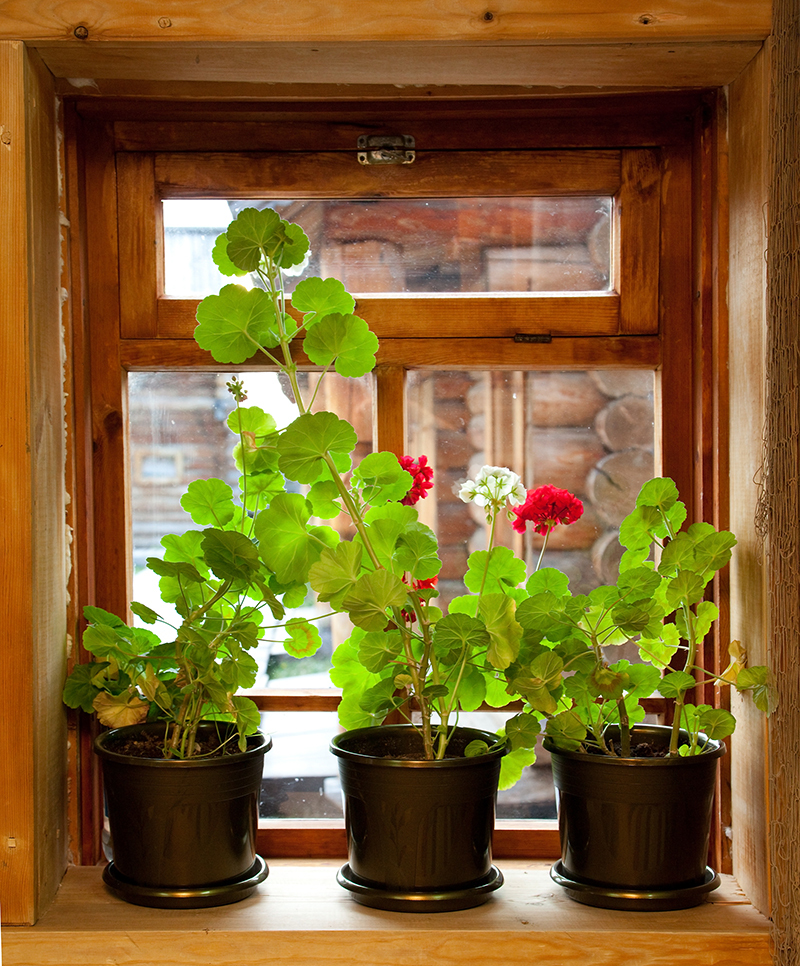Learn How to Nurture Poinsettias for Extended Longevity
Posted on 05/09/2025
Learn How to Nurture Poinsettias for Extended Longevity
Poinsettias (Euphorbia pulcherrima) are iconic holiday plants famous for their vibrant, festive bracts. However, many enthusiasts struggle to keep these plants thriving after the holiday season. If you want your poinsettias to last well beyond December and into the following year, proper cultivation and care are essential. In this comprehensive guide, you'll learn how to nurture poinsettias for extended longevity, ensuring they remain healthy, attractive, and vibrant for months--or even years--to come.
Understanding Your Poinsettia Plant
The key to long-lasting poinsettias starts with understanding their specific needs. These tropical plants are native to Mexico and Central America, flourishing in warm, bright conditions. Poinsettias aren't just disposable holiday decor; with the right care, they can become perennial additions to your indoor plant collection.
Quick Facts About Poinsettias
- Scientific Name: Euphorbia pulcherrima
- Origins: Mexico and Central America
- Plant Type: Perennial shrub (when kept in favorable conditions)
- Popular For: Vibrant bracts (often mistaken for flowers)
- Common Colors: Red, white, pink, marbled, and more
- Light Requirement: Bright, indirect sunlight

Choosing a Healthy Poinsettia
To set the stage for a long-living poinsettia plant, selection is everything. Choose plants with:
- Healthy, deep green leaves (no yellowing or wilting)
- Vibrant bracts free from spots or blemishes
- Compact, sturdy stems that don't droop
- No signs of pests or disease
Tip: Buy your poinsettia from a reputable grower and avoid those displayed in drafty or excessively cold locations, as this can shorten their lifespan significantly.
Ideal Indoor Placement for Extended Longevity
Poinsettias thrive in optimal light and temperature. Place your plant wisely!
Light Requirements:
- Require 6 hours of bright, indirect sunlight per day
- South, east, or west-facing windows are ideal
- Avoid exposure to direct midday sun; it can scorch the leaves
Temperature and Draft
- Optimal temperature: 65-70?F (18-21?C) during the day
- Night temperatures: 60-65?F (15-18?C)
- Keep away from cold drafts, open doors, and heat vents
- Never expose to temperatures below 50?F (10?C)
Remember: Sudden temperature changes or exposure to cold can cause leaf drop!
Watering Wisely: A Critical Step to Poinsettia Longevity
Overwatering is a common mistake that leads to root rot and plant death. Discover the best watering practices:
- Check soil moisture: Tap the topsoil--water only when it's dry to the touch
- Water thoroughly until it drains freely from the container's base. Do not let plant sit in draining water
- Empty saucers and decorative covers after watering
In general, water about once a week, but adjust based on your home's humidity and temperature.
Humidity and Poinsettia Health
Poinsettias appreciate moderate humidity--between 40% and 60%.
- If your home is dry, use a humidity tray or small room humidifier
- Misting lightly--especially in heated rooms--can help, but avoid excessive wetting of leaves
Extending Poinsettia Lifespan: Year-Round Care Steps
Step 1: Post-Holiday Maintenance (January-March)
- Continue regular watering and light exposure as detailed above
- Let the plant rest--no need to fertilize yet
- Remove any fading or dead leaves/bracts to prevent disease
Step 2: Spring Pruning and Repotting (April-May)
- When bracts fade (April), prune plants back to 4-6 inches tall
- Repot if roots are crowded, using well-draining potting mix
- Resume feeding. Use an all-purpose, balanced fertilizer (20-20-20) every 2-3 weeks
Step 3: Summer Outdoor Transition (May-September)
- Once frost danger passes, move the poinsettia outdoors (partial shade initially)
- Gradually acclimate to more light, but avoid direct midday sun
- Maintain regular watering and feeding
- Pinch growing tips every four weeks for a bushier plant
Step 4: Preparing for Rebloom (October-November)
Want your poinsettias to color up again for Christmas? They require short-day treatment to initiate bract coloring:
- From late September or early October, provide 14-16 hours of total darkness each night for 8-10 weeks
- Cover with a box or move to a dark closet at night, return to bright light during the day
- Maintain warmth and care as before
Pro Tip: Any interruption with light during the dark cycle can prevent reblooming!
Common Issues and Their Solutions
Leaf Drop
- Most common causes: Sudden temperature changes, drafts, overwatering
- Solution: Keep location stable, adjust watering routine
Pest Problems
- Watch for: Whiteflies, spider mites, mealybugs
- Rinse with water and remove pests manually or use insecticidal soap if infestation is bad
Wilting and Yellowing Leaves
- Usually from: Overwatering, poorly drained soil, or underwatering
- Check soil and improve drainage as needed
Failure to Rebloom
- Most often due to inadequate darkness during autumn light-dark treatments
- Double-check your timing and ensure the plant gets total darkness
Fertilization and Soil Recommendations
- After bracts fade in spring, start monthly feeding with balanced liquid fertilizer
- Use high-quality, well-drained potting soil with peat moss, perlite, or vermiculite
- Avoid heavy, dense soils as they retain too much water
- Do not fertilize when plant is in full bloom or stressed
Repotting for Extended Poinsettia Longevity
- Repot every 1-2 years, ideally in late spring
- Choose a pot one size larger with ample drainage holes
- Trim any dead roots and refresh the soil mix to keep your poinsettia vigorous
Celebrating the Year-Round Beauty of Poinsettias
Poinsettias are more than just Christmas icons; they can be rewarding year-round plants with lush green foliage and potential for repeated blooming.
- Pinch growing tips in early summer for fuller plants
- Rotating the plant regularly encourages even growth
- Careful attention to light, humidity, and water unlocks beautiful results
Fun Fact: Poinsettias are not highly toxic to pets as commonly believed, but they can cause mild symptoms if ingested. Always keep plants out of reach of curious animals and children.

Frequently Asked Questions: Poinsettia Longevity and Care
How long can a poinsettia live indoors?
With proper care, poinsettias can live for several years as indoor plants--sometimes decades if treated as perennials.
Can I keep my poinsettia year after year?
Absolutely! Learn how to keep poinsettias alive for years by following annual pruning, repotting, and light/dark reblooming routines.
Why are the leaves falling off my poinsettia?
This typically results from overwatering, cold exposure, or drafts. Consistent temperature, proper watering, and eliminating cold air are crucial.
Do poinsettias like to be misted?
Light misting can help raise humidity, but don't soak the foliage. Humidity trays are safer for long-term care.
Can I plant my poinsettia outside?
In warm climates (USDA zones 9-11), poinsettias can grow outside year-round. Elsewhere, grow them as indoor plants or move outside only in summer.
Conclusion: Enjoy Long-Lived, Vibrant Poinsettias
Poinsettias are beautiful, resilient plants that can thrive beyond the holidays with minimal effort. Learning how to nurture poinsettias for extended longevity means providing:
- Consistent warmth and humidity
- Bright, indirect light
- Proper, moderate watering
- Pruning and repotting for health
- Right seasonal care for reblooming
With these tips, your poinsettia can become a cherished part of your indoor garden--bringing color and joy season after season.
Are you ready to enjoy healthy, long-lasting poinsettias? Try these strategies and watch your plant thrive all year!
Latest Posts
Stress-Free Office Environments with Hardy Plant Selections
Learn How to Nurture Poinsettias for Extended Longevity
Expert Tips for Vibrant Hydrangea Blooms
Bring Positive Energy into Your Life with the Essence of Flowers





